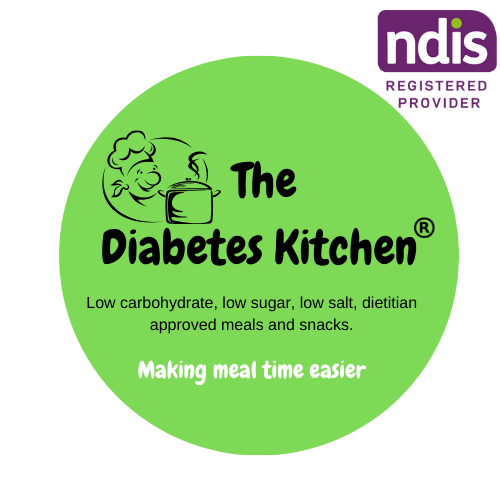Easter is a time of celebration, family gatherings, and—perhaps most notably—indulgence in chocolate. For people living with diabetes, however, Easter can be a challenging time. With supermarket shelves overflowing with chocolate eggs, bunnies, and sweet treats, it can be difficult to participate in the seasonal joy without worrying about blood sugar spikes.
But here's the good news: diabetics don’t need to avoid chocolate altogether. With the right choices and a little bit of planning, it's possible to enjoy chocolate at Easter in a way that is satisfying, safe, and health-conscious. In this article, we’ll explore what kind of chocolate is best for diabetics, how to read labels, and tips for managing Easter treats while keeping your glucose levels in check.
Understanding the Impact of Chocolate on Blood Sugar
Chocolate—especially the kinds most common at Easter—typically contains sugar and fat, both of which can impact blood glucose levels. The type of chocolate, the amount of sugar, and how much is consumed are all important factors in how it affects someone with diabetes.
When chocolate is consumed in moderation and paired with other healthy choices, it doesn’t need to derail blood sugar management. The key is knowing what to look for and which types to avoid.
The Healthiest Chocolate Options for Diabetics
1. Dark Chocolate (70% Cocoa or Higher)
Best overall option for diabetics.
Dark chocolate contains a higher percentage of cocoa solids and significantly less sugar than milk or white chocolate. A bar labeled “70% cocoa” or higher indicates that most of the bar is made from pure cocoa, not sugar.
Why it’s better:
-
Lower glycemic index
-
Rich in antioxidants like flavonoids, which may improve heart health
-
Less processed and fewer added ingredients
-
Often more satisfying in smaller amounts
Just a small square or two can be enough to satisfy a chocolate craving without pushing blood sugar levels too high. Always check the label for sugar content and avoid dark chocolates that still include high levels of sugar or artificial sweeteners.
2. Sugar-Free or Low-Sugar Chocolate - we sell Atkins choc bars which are delicious!
Many brands now offer diabetic-friendly chocolates sweetened with sugar alternatives like stevia, erythritol, or monk fruit. These sweeteners have little to no impact on blood glucose and can offer a safer alternative over Easter.
However, not all sugar-free chocolates are created equal. Some contain sugar alcohols like maltitol, which can cause gastrointestinal upset and still have a minor impact on blood sugar.
Tips:
-
Look for products that use natural sweeteners
-
Always test how your body reacts to new products
-
Enjoy in moderation to avoid digestive issues
Popular brands like Lindt Excellence No Sugar Added, Well Naturally, or Diabetic Kitchen offer options you can often find in health food stores or online.
3. Cocoa Nibs or Raw Cacao
For those looking for a whole-food option, cocoa nibs or raw cacao can provide the flavor of chocolate without added sugars or fats. Though they may be more bitter, they can be mixed into Greek yogurt, low-GI granola, or baked into low-carb muffins for a festive and healthy Easter snack.
Why they work:
-
Pure cocoa with no added sugar
-
Rich in magnesium and antioxidants
-
Very low carbohydrate content
These are ideal for diabetics who enjoy experimenting with healthier alternatives in the kitchen.
Chocolates to Avoid (or Be Cautious With)
1. Milk Chocolate
Traditional milk chocolate contains high levels of added sugar and milk solids, making it higher on the glycemic index. A standard Easter egg made of milk chocolate can cause rapid spikes in blood sugar, especially if consumed on an empty stomach.
If you really want milk chocolate, consider choosing a small, portion-controlled amount and pairing it with a high-fiber or high-protein meal to slow glucose absorption.
2. White Chocolate
White chocolate contains no cocoa solids and is made almost entirely of cocoa butter, sugar, and milk. It has little to no nutritional benefit and a very high sugar content, making it one of the least diabetic-friendly choices.
If white chocolate is a must, keep it to a small indulgence, and monitor blood sugar closely.
3. Chocolate-Coated Candies and Filled Eggs
Many Easter chocolates include caramel, nougat, marshmallow, or sugary fillings. These treats contain even more added sugars, simple carbs, and fats, and should be approached with extreme caution. These options often offer a double hit of sugar and should be avoided or replaced with sugar-free or dark chocolate versions.
Tips for Enjoying Chocolate During Easter (Without Blood Sugar Surprises)
1. Portion Control Is Key
Stick to small servings. One or two squares of high-quality dark chocolate can go a long way. Avoid mindlessly eating from large bags or boxes.
2. Eat with a Balanced Meal
Having chocolate after a meal that includes protein and fiber slows digestion and reduces the impact on blood sugar.
3. Read the Label
Always check for:
-
Serving size
-
Total carbohydrates
-
Sugar content
-
Type of sweeteners used (look for natural, low-GI options)
4. Monitor Your Blood Glucose
Check your levels before and after eating chocolate to understand how your body responds. Everyone’s tolerance is different.
5. Make Your Own Treats
Consider making diabetic-friendly Easter treats at home using unsweetened cocoa, almond flour, and natural sweeteners like stevia or monk fruit.
6. Keep Hydrated
Drink plenty of water to help your body metabolize sugar and keep energy levels steady.
Healthy Easter Gift Ideas for Diabetics
If you're shopping for a loved one with diabetes, consider:
-
A gift box of premium dark chocolates
-
Sugar-free Easter eggs (look for Australian brands like Well Naturally)
-
Homemade diabetic-friendly Easter cupcakes or brownies
-
A hamper with herbal teas, nuts, and a small chocolate treat
-
Books on healthy eating or diabetes-friendly recipe collections
Final Thoughts
Chocolate doesn't have to be off-limits for people living with diabetes. In fact, with thoughtful choices and good timing, it can be part of a balanced diet—even during indulgent holidays like Easter. Dark chocolate (especially 70% cocoa or higher), sugar-free varieties with natural sweeteners, and raw cocoa products offer satisfying, lower-GI alternatives to traditional Easter treats.
The key is moderation, smart label reading, and understanding how your body responds. By making the right choices, diabetics can enjoy Easter alongside everyone else—without compromising their health.





